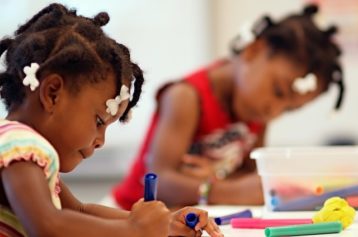
That is 1 in every 13 kids.
The study also found that more than half (55 percent) of the parents of the participants said that the medications helped their children “a lot,” while another 26 percent said it helped “some.”
Although African-American children were not the largest group represented in the study, the American Psychology Association says that Blacks are just as much at risk for mental health and emotional illness as whites, but tend to receive substantially less treatment.
The researchers were unable to identify the specific medications prescribed to the children, however they did make some discoveries regarding race and gender of the children on these medications.
- Significantly more boys than girls were given medication; about 9.7 percent of boys compared with 5.2 percent of girls.
- Older girls were more likely than younger females to be put on medication.
- White children were the most likely to be on psychiatric medications (9.2 percent), followed by Black children (7.4 percent) and Hispanic children (4.5 percent).
- Children on Medicaid or a Children’s Health Insurance Program (CHIP) were more likely on medication for emotional and behavioral problems (9.9 percent), versus 6.7 percent of kids with private insurance, and only 2.7 percent of uninsured children.
- Parents of younger children (between ages 6 and 11) were slightly more likely to feel the medications helped “a lot” compared to those of older children.
- Parents of boys were also more likely to feel the medications helped “a lot” — about 58 percent of parents of males reported that they helped “a lot” compared to 50 percent of the parents of girls.
- Parents with incomes less than 100 percent of the federal poverty level were the least likely to feel the medications helped “a lot”. Just 43 percent of these parents said the medications helped “a lot”, while about 31 percent said they helped “some”.
- More families living below 100 percent of the federal poverty level had children taking medications for emotional and behavioral problems than those above the federal poverty level.
The interviews were conducted in 2011 and 2012 with the parents of more than 17,000 children. The study was published in early April 2014.
“We really can’t speculate what factors would account for the difference,” said report author LaJeana Howie, a statistical research scientist at the U.S. National Center for Health Statistics.
S.C. Rhyne is a blogger and novelist in New York City. Follow the author on Twitter @ReporterandGirl, http://Facebook.com/TheReporterandTheGirl and visit her website at http://www.SCRhyne.com

